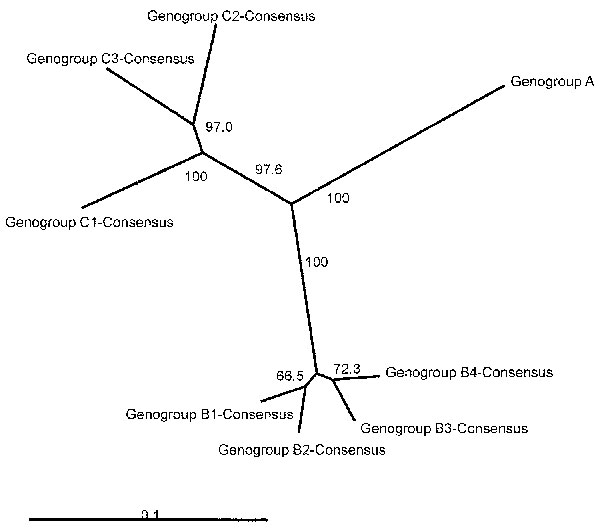Volume 9, Number 4—April 2003
Research
Molecular Epidemiology of Human Enterovirus 71 Strains and Recent Outbreaks in the Asia-Pacific Region: Comparative Analysis of the VP1 and VP4 Genes
Figure 2

Figure 2. An overview of the genetic relationships of human enterovirus 71 (HEV71) strains isolated from 1970 through 2002. Unrooted cladogram shows the genogroup relationships of HEV71 based on an alignment of the partial VP4 gene (nucleotide positions 744–950) consensus sequences for genogroups B1, B2, B3, B4, C1, C2, and C3. The complete VP4 gene sequence of the prototype strain BrCr-CA-70 (30) was used as an outgroup in the analysis. The bootstrap values in 1,000 pseudoreplicates for major lineages within the dendrogram are shown as percentages. The marker denotes a measurement of relative phylogenetic distance.
Page created: December 08, 2010
Page updated: December 08, 2010
Page reviewed: December 08, 2010
The conclusions, findings, and opinions expressed by authors contributing to this journal do not necessarily reflect the official position of the U.S. Department of Health and Human Services, the Public Health Service, the Centers for Disease Control and Prevention, or the authors' affiliated institutions. Use of trade names is for identification only and does not imply endorsement by any of the groups named above.